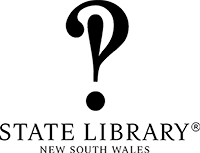FL14369319
Facsimile
Transcription
Thomas Hassall undertook to pay any debts and stressed that if he was not a clergyman and not
concerned for his mother, he would have pursued the matter in court.
Hassall acted as administrator of the estate of Edward Larkham and also managed very
effectively the properties of W. Cox, J. Howarth, Captain R. Brooks and Captain C. Kent. In
particular he managed Reverend Samuel Marsden's property when he was overseas.
In fact Hassall was very disturbed by the departure of Marsden and his family and dreaded the
prospect of losing his ''best and dearest friends in the Colony''. When the Marsdens returned Hassall
met the ship, Ann. on 27 February 1810, made arrangements for the landing of their luggage and had
£34 in cash for their immediate needs. He had spent £6 in repairing their house in Parramatta and
their affairs had prospered while he was managing them.72
Even by 1804 Hassall was doing so well that his father, James, in England, who had heard of
his progress from a visitor, wrote with wonder that he understood
''that you keep a Carriage, and deal in all sorts of Cloth, Silks, Rum, Brandy, Liquors, and in
short everything but Bread...that the weekly return of your buisness amounted to £100. That
you was grown very fat - All these things gave me great pleasure to hear of, particularly of
your regularity in keeping the Sabbath very strict''.73
In 1804 the Irish convict rebellion touched the lives of many people in the colony. Hassall
went to preach at Castle Hill and noted that all seemed quiet but when the rebellion started W.
Pascoe Crook and his family and Mr Joyce all sought refuge at the Hassall home. Mrs Hassall
remained at the house with the children and the men went to help guard Parramatta Barracks until
Major Johnston arrived with his troops.74
The land on which Hassall's house stood was about five acres and on the outskirts of
Parramatta, at what is now May's Hill on the Great Western Highway, he owned 70 acres which was
called the ''Paddock'' and there the family horses were kept. Near Prospect he aquired ''Burder
Park'' of 120 acres.
Hassall began to experiment with the wool growing, again with the assitance of Reverend
Samuel Marsden who supplied him with seed and stock. By 1808 he had aquired 1300 acres of
land including a grant of 400 acres on the Nepean at Camden, now the site of Camden airport and
where Hassall Cottage still exists. In 1905 when Governor King held and enquiry into sheep breeding
in the colony, Hassall had under his care 216 male and female sheep including the sheep of other
flockmasters such as Edward Lamb and those belonging to Mrs Kilpack, as well as his own, and
borrowed a Spanish ram from Marsden to cross with his ewes, because he considered that the cross
between the Spanish merino and the Bengal ewe to be the most profitable. He received a lot of help
from Samuel Marsden who gave Hassall's daughter, Mary, a small wether ewe which within eighteen
months had produced eight sheep, all healthy. His farm management skills were shown when he
72 Yarwood, A.T., Samuel Marsden - The Great Survivor, p.111.
73 Hassall Papers, 15 August, 1804, ML A859, Vol. 1, P.119 as cited in Yarwood, A.T., Samuel Marsden -
The Great Survivor, p.73.
74 Historical Records of New South Wales, Vol.5, p.314.
26
Notes and Questions
Nobody has written a note for this page yet
Please sign in to write a note for this page


